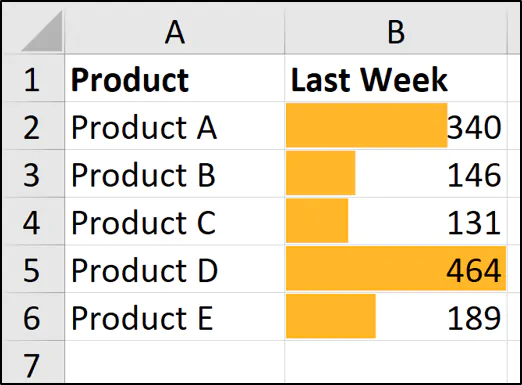Mastering Excel: Substring Tricks You Need to Know

Excel is a powerful tool for organizing, analyzing, and manipulating data, and mastering its string functions can significantly enhance your productivity. Whether you're a data analyst, a marketer, or a student, understanding how to work with text efficiently can save you hours of manual editing. In this article, we'll delve deep into the substring techniques in Excel that are essential for data management and analysis. From extracting parts of text to manipulating strings in various ways, let's unlock Excel's potential for substring manipulation.
Understanding Substrings in Excel


Before diving into specific functions, it’s important to understand what a substring is. A substring is a continuous sequence of characters within a string. In Excel, manipulating substrings allows you to:
- Extract specific parts of text
- Analyze or modify data within cells
- Create dynamic formulas
Key Functions for Substring Manipulation

Excel offers several functions that are particularly useful for substring manipulation:
- LEFT: To extract the leftmost characters.
- MID: To extract any middle part of the string.
- RIGHT: To pull out the characters from the right end.
- FIND/SEARCH: To locate specific text within a string.
- LEN: To count the number of characters in a string, which is crucial when dealing with dynamic substring extraction.
Extracting Substrings with LEFT, MID, and RIGHT

Here are the foundational substring functions and how to use them:
LEFT Function

The LEFT function is straightforward; it extracts a specified number of characters from the start of a string:
=LEFT(text, num_chars)text- The string you want to extract from.num_chars- The number of characters to extract from the left.
MID Function

To extract any portion of the text, MID comes into play:
=MID(text, start_num, num_chars)text- The string you are extracting from.start_num- The position to start extracting from.num_chars- Number of characters to extract.
RIGHT Function

Similar to LEFT, but extracts from the end:
=RIGHT(text, num_chars)text- The string to extract from.num_chars- Number of characters to extract from the right.
Advanced Substring Techniques

Now, let’s move into more complex scenarios where combining these functions can achieve more sophisticated results:
Dynamic Extraction with FIND/SEARCH and LEN

Imagine you need to extract the domain name from an email address:
=MID(A1, FIND(“@”, A1) + 1, FIND(“.”, A1, FIND(“@”, A1)) - FIND(“@”, A1) - 1)💡 Note: Here, FIND(“@”, A1) returns the position of the @ symbol, and FIND(“.”, A1, FIND(“@”, A1)) finds the position of the first dot after the @, enabling us to dynamically extract the domain name.
Extracting First and Last Names from Full Names

With names, you might encounter various formats. Here’s how to extract first and last names:
=LEFT(A1, FIND(” “, A1) - 1) // Extracts the first name
=RIGHT(A1, LEN(A1) - FIND(” “, A1)) // Extracts the last nameUsing SUBSTITUTE and LEN for Variable Positions

If you need to extract a substring where the starting position can vary, SUBSTITUTE can help locate the nth occurrence of a character:
=MID(A1, FIND(””, SUBSTITUTE(A1, “ “, “”, 2)) + 1, LEN(A1))Practical Applications

Here are some practical applications of substring manipulation in Excel:
Data Cleaning

Substring functions are invaluable for cleaning data:
- Removing unwanted characters or spaces
- Standardizing formats (e.g., converting various date formats to a standard format)
- Splitting concatenated data into separate columns
Dynamic Formulas

Using these functions dynamically can automate tedious tasks:
- Extracting values from within parentheses
- Generating IDs or codes from strings
- Creating summaries or abstracts from long text entries
🔍 Note: Always ensure your data is consistent and clean before applying these techniques to get the most accurate results.
By mastering the art of substring manipulation in Excel, you can significantly improve your data handling efficiency. These techniques not only enhance your productivity but also open doors to more sophisticated data analysis and manipulation. With the tools at your disposal, you can easily slice, dice, and reconfigure text data in any way you see fit, making your work with Excel more intuitive and effective. Remember, practice is key; try applying these functions to real-world data to truly master them.
What is the difference between FIND and SEARCH functions?

+
FIND is case-sensitive while SEARCH is not. SEARCH will find “Book” in “bookmark” or “Book,” while FIND will only find “Book” if it matches exactly.
Can I extract a substring based on dynamic criteria?
+Yes, by using functions like FIND and SEARCH along with LEN, you can extract parts of text dynamically. For instance, you can extract everything before or after a specific delimiter or word.
How do I handle errors when using substring functions?
+Excel provides functions like IFERROR to manage errors. You can wrap your formula with IFERROR to return an alternative result or an empty string if an error occurs, like: =IFERROR(LEFT(A1, FIND(” “, A1) - 1), “”)



